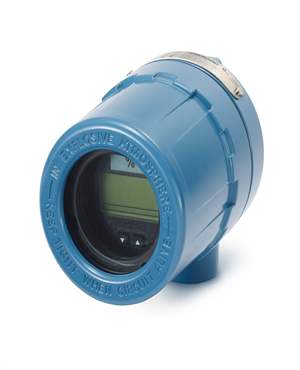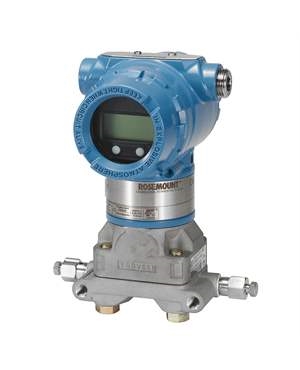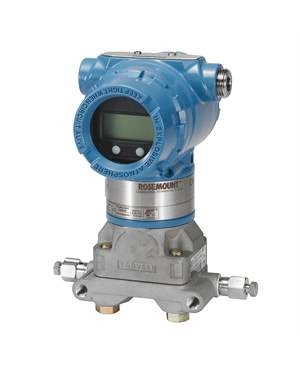A Practical Guide to Vacuum Measurement and Operation
Brian Craig
September 03, 2024
Accurate vacuum measurement is not only a technicality but also a need in sectors such as scientific research, food packaging, and semiconductor manufacture. In many situations, knowing how to measure vacuum pressure accurately might mean the difference between success and failure. Everything you need to know about measuring vacuum pressure will be covered in this tutorial, from the fundamentals to sophisticated advice on maintaining accuracy.

Understanding the Basics of Vacuum Measurement
- Vacuum Pressure vs. Absolute Pressure
The pressure inside a vacuum system in relation to the surrounding atmospheric pressure is referred to as vacuum pressure. Conversely, absolute pressure is the entire pressure as measured in relation to a zero pressure, or pure vacuum. It is essential to comprehend this distinction in order to measure vacuum accurately.
- The Role of a Vacuum Gauge
An instrument used to gauge the pressure inside a vacuum system is called a vacuum gauge. This apparatus is indispensable for ascertaining the extent of vacuum and guaranteeing that the system functions within its prescribed boundaries.
Types of Vacuum Gauges
- Mechanical Gauges
These vacuum gauge kinds are the most fundamental ones. The Bourdon tube and diaphragm gauges are examples of mechanical gauges that use a physical component's movement to determine pressure. They are frequently employed in low- to medium-vacuum applications for vacuum measurement.
- Thermal Conductivity Gauges
These gauges, like the Pirani gauge, use the ability of a gas to transfer heat to determine the vacuum pressure. When a more sensitive vacuum gauge reading is required, they are frequently utilized and are perfect for mid-range vacuums.
- Ionization Gauges
Ionization gauges are useful when working with very high vacuums. By ionizing the gas in the vacuum and monitoring the ensuing current, these gauges calculate the vacuum pressure. They are employed in specific settings where accuracy is essential.
- Comparison and Suitability
The perfect vacuum gauge for you will rely on your unique requirements. Thermal conductivity gauges are superior for more precise measurements, although mechanical gauges are excellent for everyday use. The best choice for ultra-high vacuums is an ionization gauge.
How to Measure Vacuum Pressure Accurately
- Steps for Accurate Vacuum Measurement
The first step in measuring vacuum pressure accurately is preparation. Make sure there are no pollutants or dirt particles in your vacuum system. The vacuum gauge should then be positioned correctly within the system, as this might have a big impact on your measurements. Lastly, to ensure accuracy, calibrate your gauge on a regular basis.
- Common Mistakes in Vacuum Measurement
Failure to calibrate the vacuum gauge is one of the most frequent mistakes made when measuring vacuum. Gauges may deviate from their initial settings with time, producing readings that are not accurate. Incorrect gauge positioning is another error that can lead to inaccurate vacuum gauge readings.
Practical Applications of Vacuum Measurement
- Industrial Uses
Accurate vacuum measurement is essential to the functioning of numerous industries. For instance, stringent vacuum pressure control is needed during semiconductor manufacture to avoid contamination. Precise vacuum pressure measurements are crucial because food packaging uses vacuums to maintain freshness.
- Scientific Research
Vacuum pressure is frequently a crucial element in the laboratory. For physics, chemistry, or biology research, precise vacuum gauge measurement guarantees repeatable and constant conditions.
- Maintenance and Troubleshooting
Furthermore crucial to identifying and resolving problems with a vacuum system is precise vacuum measurement. Vacuum pressure monitoring allows you to find leaks, obstructions, and other issues that could be affecting performance.
Best Practices for Operating in a Vacuum Environment
- Safety Precautions
There are risks associated with using vacuums, therefore it's important to observe safety precautions. Make sure your vacuum gauge is in good operating order at all times, and make sure you are aware of the particular risks connected to your vacuum system.
- Routine Maintenance
To maintain accuracy, it's important to regularly service your vacuum gauge and other system components. This includes cleaning, calibrating, and replacing parts as needed.
- Advanced Tips
It may be more difficult to maintain an accurate vacuum measurement for people who operate in demanding situations. To get higher accuracy, think about employing sophisticated methods like differential measuring or cross-checking data with several gauges.
If you're ready to take your vacuum measurement to the next level, ensure you're using the best tools available. At Transmitter Shop, we offer a wide range of high-quality vacuum gauges and transmitters designed to deliver precise and reliable readings. Don't compromise on accuracy—explore our selection today and find the perfect solution for your needs. Contact us to get started!
Related Posts
- What are the Steps Involved in Calibrating Pressure Gauge?
- All Important Questions on Reconditioned Transmitters Answered
- Is Remanufactured Transmitter a Better Option than a New One?
- Differential Pressure Transmitters: How Do They Help in Flow Measurements?
- 3 Whats that Explain How Often You Should Calibrate Pressure Transducer
- Guidelines for Troubleshooting Pressure Transducers
- Learn How to Calibrate a Pressure Transmitter – II
- Learn How to Calibrate a Pressure Transmitter
- Know Three Interesting Uses of Pressure Transmitters
- Things to Check before Buying a New Pressure Transmitter
- A Look at Various Types of Industrial Transmitters – Part II
- A Look at Various Types of Industrial Transmitters Part I
- All Questions on Smart Transmitters and their Calibration Answered
- 3 Major Pressure Transmitter Technologies That Made the Device Popular
- An Unconventional Guide to Selecting the Right Pressure Sensor
- Factors To Be Considered While Differentiating $40 and $400 Pressure Transmitters
- Tips to Augment the Performance and Service Life of Pressure Transmitter
- Factors of Consideration When Choosing Pressure Transmitters
- 5 Most Popular Pressure Transmitter Technologies
- Tips to Improve the Performance of Pressure Sensors
- Factors to Consider When Choosing a Pressure Transmitter Manifold
- Safety Tips for Differential Pressure Transmitter Operation
- Impact of Shock and Vibration on Pressure Transducer
- Rosemount 3051S vs 3051C Transmitter – What is Your Choice?
- Rosemount 2088 Vs Rosemount 3051 – A Few Points of Differences Discussed
- Difference in Conventional Transmitters and Smart Transmitters
- How to Choose Diaphragm Seals for Your Application?
- How to Select Pressure Transmitter for Your Application?
- Remote Seals: Significance, Working Principle & Applications
- How Do You Calibrate A Flow Transmitter?
- What is Absolute Pressure Transmitter & how does it work?
- HART Communication Protocol: Overview, Working Principle, Benefits in Industrial Automation
- Absolute and Gauge Pressure Transmitters - Overview and Working Principle
- Flow Meter vs Flow Transmitter: Know the Difference
- How Do You Test for 4 to 20mA Signal in a Pressure Transmitter?
- Multivariable Transmitter: What Is It and How Does It Work?
- Pressure Transmitters vs. Pressure Transducers: Learn the Differential Characteristics
- Procedure to Calculate Accuracy of Pressure Transmitter Discussed
- Testing Pressure Gauges: Processes of Verification Test and Functional Test
- An Ultimate Selection Guide for Flow Transmitters
- The Benefits and Challenges of HVAC System Balancing
- Fluid Flow Isolation Techniques for Pressure Instrumentation
- Understanding Pressure Ranges and Units for Fluid System Monitoring
- Understanding the Impact of Pressure Fluctuations on Drying Performance
- Monitoring and Controlling Energy Production in Power Plants
- Common Challenges in Air Flow Measurement and How to Overcome Them
- Pressure Monitoring in Pump Systems: A Comprehensive Guide
- Exploring Density and Viscosity Measurement in Industrial Processes
- Pneumatic Pressure Controllers: A Safe Choice for Hazardous Areas
- A Practical Guide to Vacuum Measurement and Operation
- Complete Hydrogen Gas Safety and Measurement Solutions
- Steam Boiler Drum Level Measurement A Comparison of Control System Technologies
- Furnace Flame Sensor Faults Everything You Need to Know for Safe Operation
- Comparison between Multi Valve Manifolds Block Valves and Bleed Valves
- Pneumatic Pressure Controllers: A Safe Choice for Hazardous Areas
- Furnace Flame Sensor Faults Everything You Need to Know for Safe Operation
- Pneumatic Pressure Controllers: A Safe Choice for Hazardous Areas
- How Can Greenhouse Gas Emissions Be Reduced?
- A Practical Guide to Vacuum Measurement and Operation
- Understanding Electrochemical Detection: Principles, Techniques and Environmental Application
QUICK ENQUIRY







